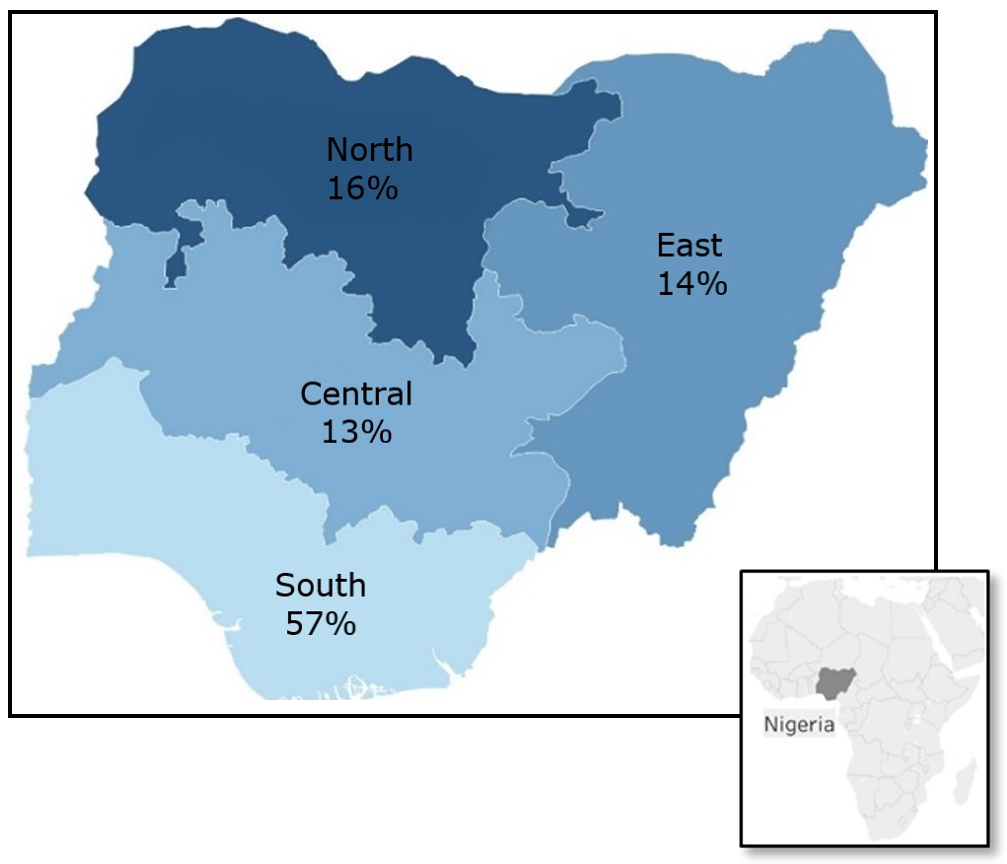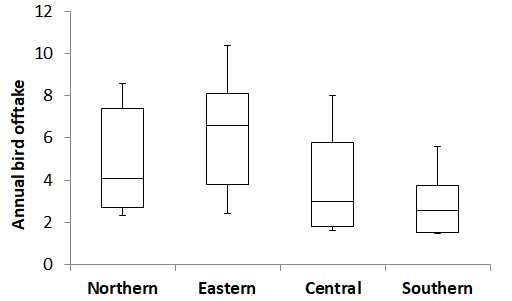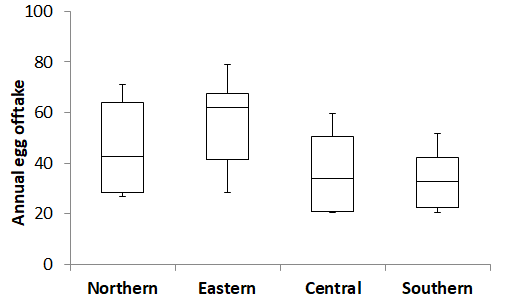Poultry production in Nigeria
The Nigerian poultry sector has expanded rapidly in recent years. Local production only meets 30% of the demand for chicken eggs and meat, thus there is huge scope for the industry to expand.
Total poultry population by agricultural zone (Data from 2016-17 livestock census).
- Nigeria has the largest annual egg production and second largest chicken population in Africa.
- The Nigerian poultry industry comprises about 180 M birds.
- Of these, 80 M chickens are raised in extensive systems, 60 M in semi-intensive, and the remaining 40 M in intensive systems.
- Poultry production in Nigeria amounts up to 300 Mt of meat and 650 Mt eggs per year.
- About 85 M Nigerians are involved in poultry production (many on a small to medium scale).
Poultry production systems
Extensive system
- The extensive/free-range/backyard system comprises nearly half of the chicken population.
- Flock sizes comprise up to 50 birds.
- Production is subsistence-oriented, mainly for family consumption with low levels of egg productivity.
- The flock includes birds of different indigenous species and varying ages.
Median annual bird production rates (birds sold or consumed) range from 3 to 7 birds/year (box plots show 10th, 25th, 50th, 75th and 90th percentile) (Modelled in VIPOSIM using data from LSMS (2016)).
Semi-intensive system
- The semi-intensive system is a family-based subsistence and market-oriented production system, comprising about one third of total chicken population.
- The average flock size ranges from about 50 to about 2,000 birds including both improved and indigenous breeds with low to medium productivity
Intensive system
- The intensive poultry system is a market-oriented production with high bird numbers (> 2,000 birds) and high productivity levels from exotic breeds of poultry.
- Around 21% of chickens in Nigeria are raised in commercial/integrated farms.
- Most of these are concentrated in the south west region, near major cities.
Issues and opportunities for poultry
- The traditional indigenous poultry system is inexpensive and low input, with the capacity to handle harsh weather conditions and adapt to adverse environments.
- Rural poultry systems are generally of small-scale, characterised by insufficient hygiene management and receive little or no veterinary inputs.
Median annual egg production rates (eggs/hen sold or consumed) range from 33 to 62 eggs/hen per year (box plots below show 10th, 25th, 50th, 75th and 90th percentile) (Modelled in VIPOSIM using data from LSMS (2016)).
- The costs of labour, medication, and fluctuating feed prices constitute substantial input costs in poultry production.
- Small-scale farmers suffer from marketing problems due to lack of market access with poor infrastructure.
- Indigenous birds are preferred by the majority of Nigerians for their taste, pigment, leanness and suitability for traditional dishes.
- Poultry production has not kept pace with the rapid increase in domestic consumption.
- There is enormous potential for the poultry industry in Nigeria to enhance food and nutritional security, while contributing to household and economic growth.
- Modelling can assist in understanding how interventions can improve egg and meat production for extensive backyard systems.
References:
- FAO 2019. The future of livestock in Nigeria. Opportunities and challenges in the face of uncertainty. FAO, Rome, Italy.
- Heise et.al. 2015. The poultry market in Nigeria: Market structures and potential for investment in the market. International Food and Agribusiness Management Review 18: 197-222.
- LSMS Survey.
- PAN 2017. History of the poultry association of Nigeria. Poultry Association of Nigeria, Abuja.
Download our poultry production in Nigeria fact sheet here.



